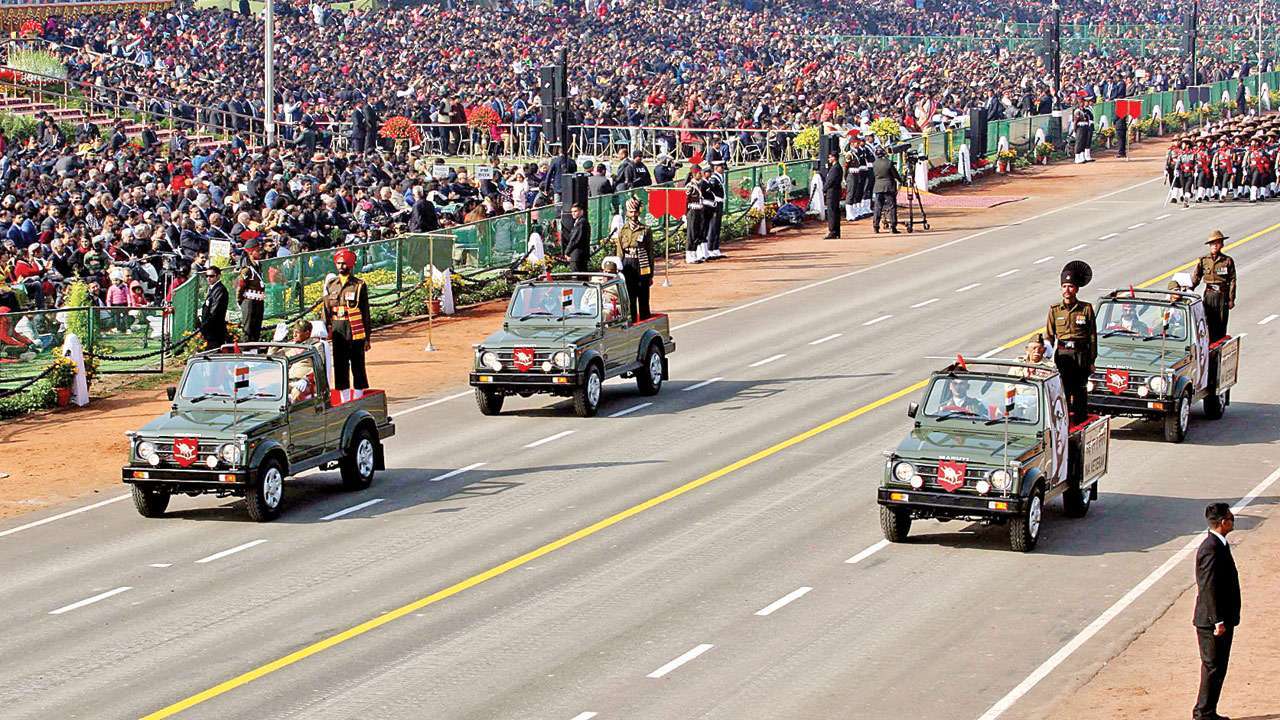
At long last, one of India’s leading revolutionaries and his army is getting the credit they so richly deserve. At the 70th Republic Day on Saturday, four veterans of the Subhash Chandra Bose’s Indian National Army (INA) or the Azad Hind Fauj, attended the parade. The four, all over 95, rode down the ceremonial boulevard in an open jeep, with a striking black and white portrait of the original ‘Netaji’, hung by the side of their military vehicles.
The decision to invite members of the INA to be part of the parade is a belated recognition, 70 years after the country became a Republic, that the seeds of Independence were sown not just by the leaders in the Congress party, but even by revolutionaries outside it. Subhash Bose was part of the Congress, but was put in the shade when his decision to take charge of the INA and broaden the scope of the Independence movement, led to an ideological conflict with the leading lights of the Congress, including Gandhi. It resulted in Subhash chartering a different course that took him to Europe and Japan, breaking bread with all global forces opposed to the British, including Adolf Hitler and the Japanese. Sadly, in the national discourse since Independence, Bose has been a formidable, if distant figure. Congress historians have taken pains to downplay his role, glorifying Nehru and his clan at the expense of others who sacrificed their lot at the altar of the country’s freedom.
The Modi government has made concerted efforts in the last four-and-a-half years to bring the focus back on Bose, the Azad Hind Fauj and their contribution to the freedom movement. In December last year, the Prime Minister himself lead the tributes, renaming three islands in the Andaman, one of them after Netaji Subhash Chandra Bose. The INA had captured the Andaman Island for a brief while, in a joint operation with their allies, the Japanese Army, during the Second World War. In 2017, Prime Minister Narendra Modi released digital copies of 100 files related to Netaji on his birth anniversary. The release of the files had led to great sensation, with much speculation about its contents.
Even though there was not much that emerged, it did throw light on an important period of modern Indian history, which had been overlooked or downright ignored by India’s so-called nationalist historians. Since then, a lot of water has flown down the Hoogly. Netaji’s grand nephew, Chandra Bose, has joined the BJP and may contest as a candidate in the forthcoming general election from Bengal. By all accounts, the presence of INA veterans, Parmanand Yadav, Lalti Ram, Hira Singh and Bhagmal, at a day when India displays its military might, was a sight for the eyes. It is also important that the younger generation, who have not been taught the right history lessons, be made aware of the pantheon of revolutionaries that India possessed, other than the usual suspects. Bose and his Azad Hind Fauj must surely figure right on top of the heap.